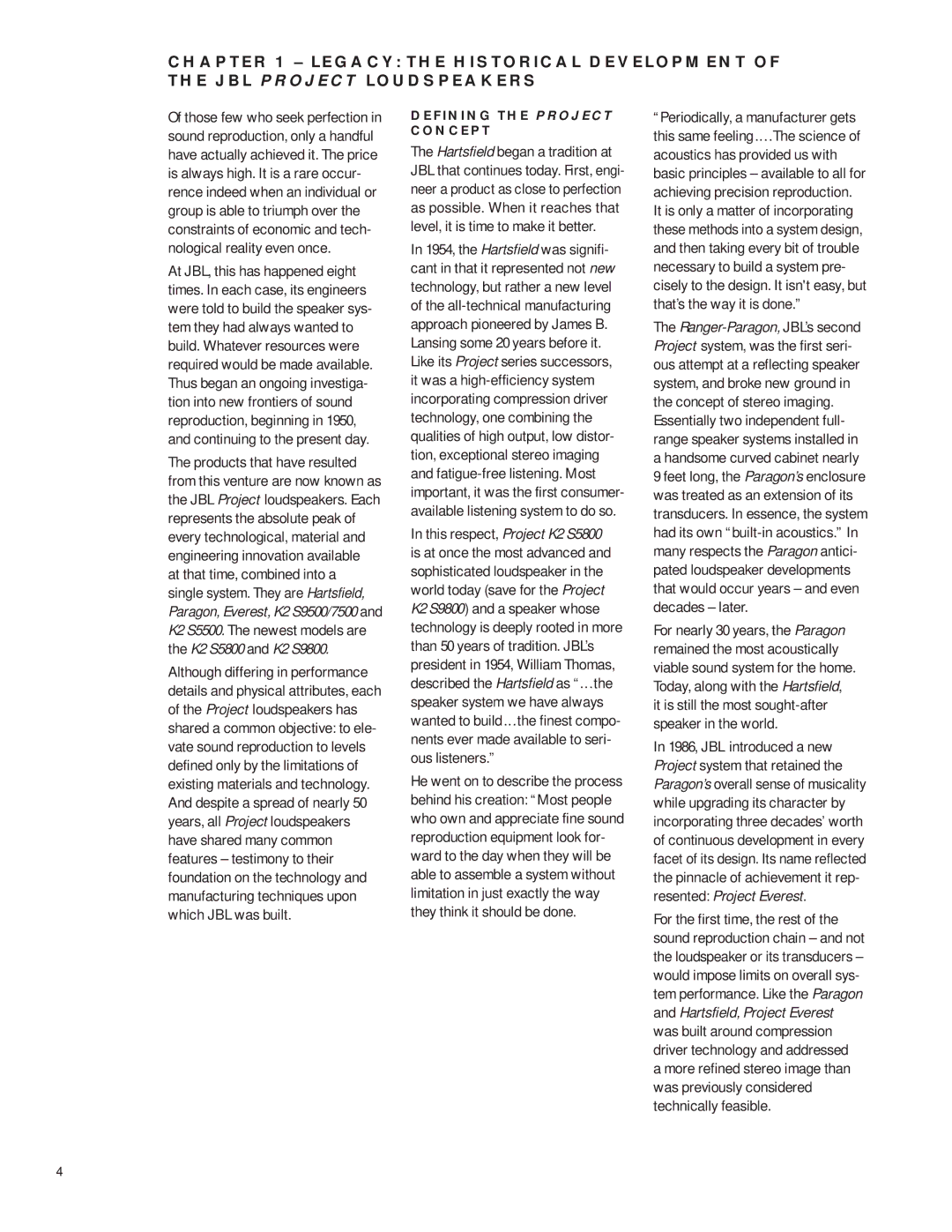K2 S5800 specifications
The JBL K2 S5800 is an exceptional loudspeaker that caters to audiophiles and professional audio engineers looking for high fidelity sound in various listening environments. Known for its iconic design and remarkable performance, the K2 S5800 combines advanced technology with a rich heritage in audio engineering, making it a standout choice in the realm of high-end speakers.One of the main features of the K2 S5800 is its innovative 3-way speaker configuration, which incorporates a 15-inch woofer, a 4-inch midrange driver, and a 1-inch titanium dome tweeter. This combination allows for a wide frequency response, delivering deep and powerful bass, clear midrange, and crisp high frequencies. The result is a well-balanced sound that can reproduce music accurately without coloration, providing listeners with an authentic audio experience.
The K2 S5800 utilizes JBL's patented Bi-Radial horn technology, which enhances the dispersion of high frequencies across a broad area. This technology ensures that listeners can enjoy consistent sound quality, whether they're positioned in the sweet spot or off to the side. Additionally, the advanced waveguide design of the horn optimizes the interaction between the drivers, further improving coherence in sound reproduction.
Another noteworthy characteristic of the K2 S5800 is its ability to handle high power levels, making it suitable for both home audio systems and professional studio environments. With a power handling capacity of up to 800 watts, the K2 S5800 can deliver powerful sound that fills large spaces without distortion. This capability is crucial for audio professionals who require reliable performance during recording, mixing, or live sound applications.
The speaker's cabinet is meticulously crafted from high-quality materials, providing both aesthetic appeal and acoustic integrity. The enclosure is designed to minimize resonance and unwanted vibrations, ensuring that the sound remains clean and true to the source. Furthermore, the K2 S5800's elegant finish and sleek design add a touch of sophistication to any space, making it not just a high-performance speaker, but also a stylish piece of furniture.
In summary, the JBL K2 S5800 is a remarkable loudspeaker that merges cutting-edge technology with a commitment to audio excellence. With its powerful drivers, advanced dispersion technology, and premium build quality, it is an ideal choice for anyone seeking unparalleled sound performance in a beautifully designed package. Whether for professional use or high-end home listening, the K2 S5800 exemplifies JBL's legacy of innovation and quality in the audio industry.
